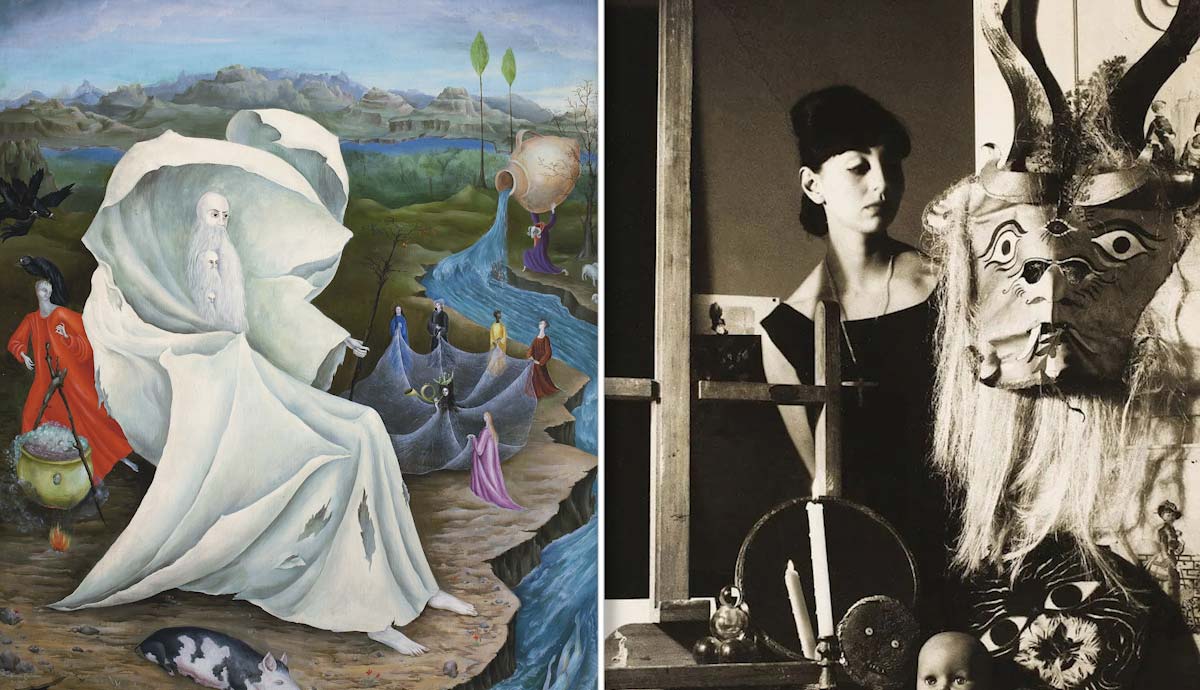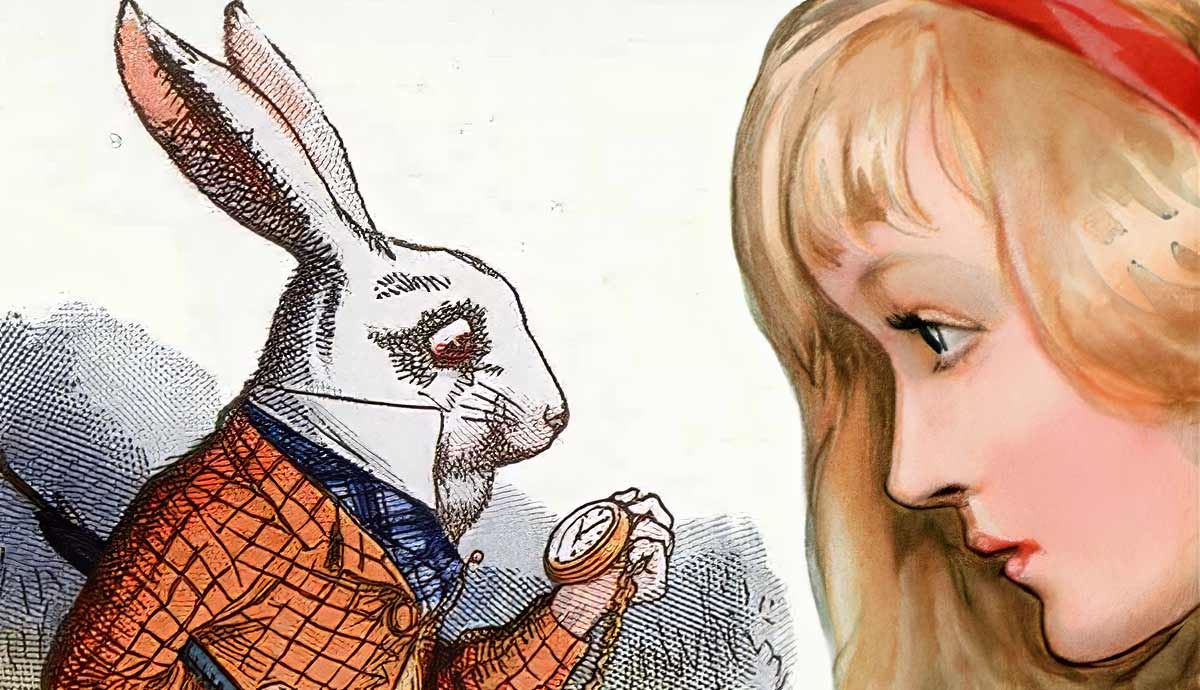
During World War II, many artists, writers, and other creatives fled Europe in search of a safe space far away from violence, oppression, and fear. Some settled in the USA, while others chose to go to Mexico, which allowed foreigners to settle and create almost freely. Of all immigrants, the most prominent group represented the European Surrealists, many of whom would later become big names in the history of art. Read on to learn more about the European Surrealists in Mexico, their lifestyle, and their rivalry with Frida Kahlo.
Surrealists in Europe: The Origins

The Surrealist movement originated in post-World War I Europe and lasted well into the 1950s. Surrealism became one of the most popularized and discussed art movements in the history of modern art, it brought the exploration of the unconscious to the public, talking about hidden desires, fears, and sexuality in an open and sometimes shocking way. According to Andre Breton, the leading theoretician of Surrealism, their goal was to bridge the gap between dream and reality. Based on unexpected contrasts, irony, and association, Surrealism was diverse and multifaceted, ranging in media from painting and photography to film and poetry.
However, not everyone was happy with such public demonstrations of the subconscious. Critics accused the Surrealists of a superficial approach to psychoanalysis, obscenity, and danger to public morals. Up until this day, the movement receives criticism for its overly sexualized imagery and the unfair treatment of women artists.
Surrealists During World War II

As the war broke out and the Nazis grabbed control over more and more territory, avant-garde artists felt the atmosphere getting more and more tense. The most progressive art forms, including Surrealism and Cubism, were deemed degenerate by the official ideology, with artworks destroyed and their creators imprisoned. It did not help that many European creatives had Jewish origins, and the majority of them held left-wing political beliefs.
In June 1940, a group of American intellectuals initiated the creation of the Emergency Rescue Committee, an organization set to evacuate persecuted artists and politicians from war-torn Europe. Among those who helped to arrange the evacuation of artists and other creatives was the famous art patron and collector Peggy Guggenheim, who covered transportation and bureaucratic expenses. With the Committee’s help, famous artists like Marc Chagall, Max Ernst, Andre Breton, Jacqueline Lamba, and many others were able to safely leave Europe.

Mexico started to accept refugees in 1941 as the war waged through Europe. It was the desired option for some; for others, it was their only chance. The United States, which was the most popular destination for Europeans escaping the war, refused to accept many of those connected to left-wing politics and Communist parties in their home countries.
Mexico, on the contrary, was more than friendly to that side of the political spectrum, specifically eager to accept the Spanish running from the Franco regime. From the Mexican side, one of the principal mediators arranging evacuation matters with the local officials was none other than Frida Kahlo, perhaps the most famous Mexican artist of all time. Andre Breton, the father of European Surrealism, visited Mexico in 1938 and was astonished by its nature and people. He called it a Surrealist country par excellence and particularly praised how the Mexicans managed to save and cherish their traditional culture, gods, and beliefs. Breton’s account was by no means extensive and it was certainly too exoticized. Still, it nonetheless created an image of Mexico as a magical and inspirational place.
Artistic Commune in Mexico

Unlike in many other countries, in Mexico artists had opportunities to work as long as they did not threaten the locals’ career prospects. Thus, many Spanish-speaking immigrants started teaching in universities, raising a new generation of Mexican creatives and academics. Apart from their jobs, the majority of Europeans did not interact closely with the locals, preferring to keep the company of their fellow refugees. The reason was not the rejection of local customs but the shared experience of war, tragedy, and dramatic flight across ravaged Europe.
The house of the artist Remedios Varo was the central meeting point for the whole community. Anyone in need could find company, shelter, and money raised by all group members. Varo hosted dinners and parties. She also sent party invitations to random addresses taken from a phone book. A painting by a Mexican artist of German-Hungarian origin Gunther Gerszo documented the atmosphere in Varo’s home, as well as the host herself in a work called The Days of Gabino Barreda Street.

The house itself was a Surrealist playground, filled with weird objects gathered by Varo during her travels and explorations. There were magical stones and strange talismans. It was a majestic ruin with holes in the floor so large and plentiful you had to step in carefully. From these holes, rats were climbing out, ignoring cats and humans. Varo’s husband, the Dadaist poet Benjamin Peret, tried to poison them, yet Varo secretly fed them cheese, encouraging the rodents’ presence.
Next to the house, an abandoned lot was used by a local hospital to dump waste, including amputated body parts. Thus, an unsuspecting guest of Varo could have witnessed a hand or a leg sticking out of a pile of trash. Despite the sheer horror of the situation, these images gave birth to many Surrealist short stories and paintings produced by the immigrant group. Despite limited finances and opportunities, their lives were eventful and creative. In 1942, Marc Chagall visited Mexico City and invited several Europeans to work on set decoration for a local ballet production.
The Three Witches of Surrealism

At the center of this foreigners’ club were three women, dubbed The Three Witches because of their shared interest in the occult and spirituality. They were Remedios Varo, Leonora Carrington, and Kati Horna. Remedios Varo was a Surrealist painter of Spanish origin who spent most of her life escaping hostile circumstances in one way or another—from her conservative family and religious education to her home country, led by violent nationalists. Her escape to Mexico was the final part of her lifelong displacement, which allowed her artistic voice to get louder and clearer.
Leonora Carrington, born in England, had a similar or even more dramatic experience. Her affluent yet conservative family put every obstacle in her way, going as far as bribing the police to arrest her then-partner, Max Ernst. Carrington was forcefully admitted to a psychiatric asylum and treated with drugs and electroconvulsive therapy. Escaping from the asylum and her family, she arranged a marriage of convenience with a Mexican diplomat, which allowed her to leave the continent safely.

The third Witch was the Hungarian photographer Kati Horna. Despite being famous for her Surrealist collages and interest in shamanism, Horna was a prominent documentary photographer who, among other events, documented the tragedy of the Spanish Civil War in 1937. Unlike her male counterparts in the field, Horna focused not on soldiers and military action but on the shattered daily lives and the effect of war on women and children.
These three women would be among those who would refuse to leave Mexico even after the war was over. Horna even became a Mexican citizen, claiming that this country was the only one she could be a patriot of. Their artistic careers bloomed, powered by personal development as well as the bold and unique Mexican tradition. Varo and Carrington’s paintings sold even before they were finished, and Horna’s photographs appeared in Mexican magazines. However, their art hardly reached the masses in Europe, at least during their lifetime. Only in 2006, the cousin of Leonora Carrington, journalist Joanna Moorhead, discovered that her long-lost family member was considered one of the most important artists in Mexico.
Frida Kahlo and the European Surrealists

Despite the ideological and practical common grounds, local artists were not too keen on accepting foreigners into their circles. The dominating trend among Mexican artists was to decolonize their art, removing it from the pressure of Western aesthetic tradition. Although well-educated and experienced artists and writers who migrated to Mexico would surely benefit the country in the long term, local creatives saw their presence as a threat to their newly forming identity.
Even the terminological category was an issue. Despite being labeled as Surrealists in the Western press, locals like Frida Kahlo opposed the term. Kahlo rejected the supposed internationality of Surrealism in favor of political and national identity, personalizing and localizing her symbols and contexts. Although she and Diego Rivera hosted Andre Breton during his 1938 visit to Mexico and met with the refugee artists on several occasions, they were not overly happy about them. Frida Kahlo had a particular dislike for the men of the movement, which she developed while visiting Paris. In her notes, she mentioned that she would prefer selling tortillas on a Mexican street market than sharing anything with the overintellectual and perverse pseudo-artists.










